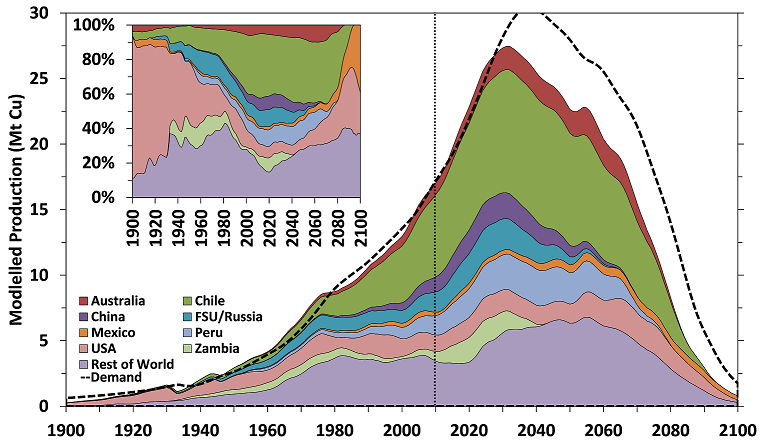Abstract
The concept of “peak oil” has been explored and debated extensively within the literature. However there has been comparatively little research examining the concept of “peak minerals”, particularly in-depth analyses for individual metals. This paper presents scenarios for mined copper production based upon a detailed assessment of global copper resources and historic mine production. Scenarios for production from major copper deposit types and from individual countries or regions were developed using the Geologic Resources Supply-Demand Model (GeRS-DeMo).
These scenarios were extended using cumulative grade-tonnage data, derived from our resource database, to produce estimates of potential rates of copper ore grade decline.The scenarios indicate that there are sufficient identified copper resources to grow mined copper production for at least the next twenty years. The future rate of ore grade decline may be less than has historically been the case, as mined grades are approaching the average resource grade and there is still significant copper endowment in high grade ore bodies. Despite increasing demand for copper as the developing world experiences economic growth, the economic and environmental impacts associated with increased production rates and declining ore grades (particularly those relating to energy consumption, water consumption and greenhouse gas emissions) will present barriers to the continued expansion of the industry. For these reasons peak mined copper production may well be realised during this century.
